Day 2-Out of the FOG: A Non-traditional Research Approach to Alignment
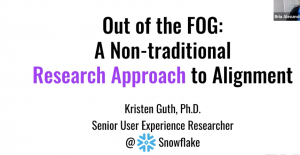
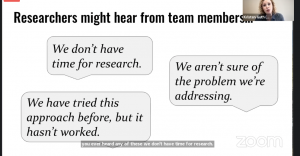
— Ever heard the following quotes above?
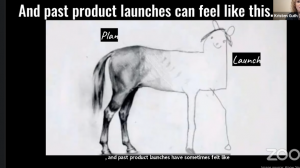
— And have you had past product launches where the launch didn’t go as planned, and people feel misaligned?
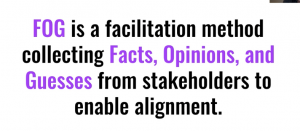

— Research is seen as slow and as a cost-center, and we see programs like Rapid Research that reflect this assumption
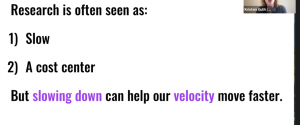
-
It’s important to khow we think and if our ways of thinking are getting us to where we want to go
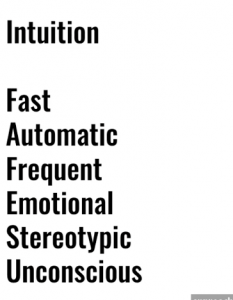
-
Helps us find patterns and conclusion and perceptions
-
Intuition is thinking you know without knowing why you know
-
Wrong decision can be generated automatically
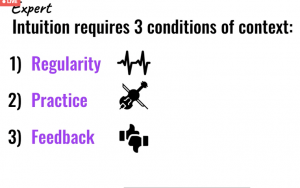
-
Regularity
-
Practice in the context
-
Feedback on guessing right/wrong
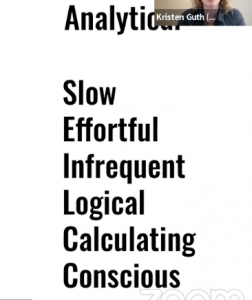
-
It is cognitively demanding but likely leads to better decisions
-
It engages with complexity, uncertainty, and advantage of time to think
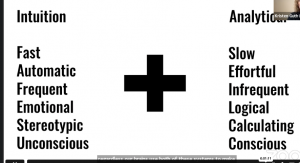
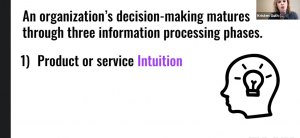
— First, there is product management whose central value proposition is knowing industry, and having a plan for innovation
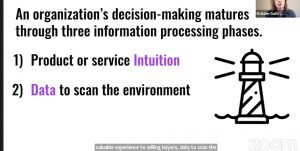
-
Data will establish recognizable patterns and provide answer to what is happening but not how and why
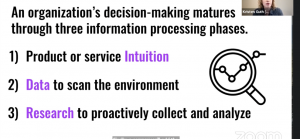
-
UXR is the most analytic form of knowledge generation
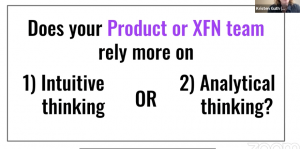
-
We are often over-confident and provide coherent stories that provide a clear narrative and mis-understand things spontaneous and automatically
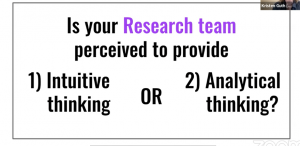
-
When in teams setting, analytical and intuitive thinking appear mutually exclusive
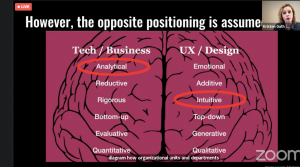
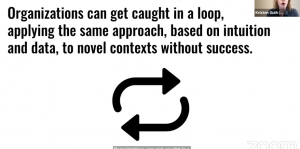
— Moreover organizations can all get caught in a doom loop of continuously basing decisions on past experiences or gut thinking
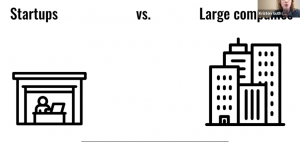
-
The end goal can be to launch another product, and rely on gut feeling
-
Lack of practice from new team, can suggest high potential for failure
-
Now we have decision paralysis and apply same processes that worked before to a new context
-
Company might have great idea, but can’t move successfully toward goals
-
Brought UXR for analytical thinking, when intuition failed
-
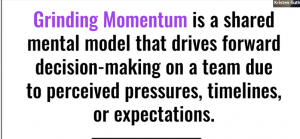
-
There is defined as a need for speed to move decision making forward, without shared research knowledge, due to timelines and expectations
-
No time for analytical information processing and teams don’t understand value of cohesion and shared mindsets
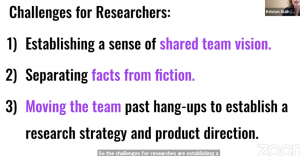
-
Establishing a sense of shared team vision
-
Separating facts from fiction
-
Moving the team past hang-ups to establish a research strategy and product direction
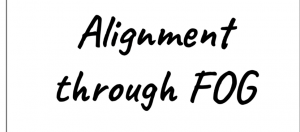
— FOG can balance thinking to slow down this grinding momentum
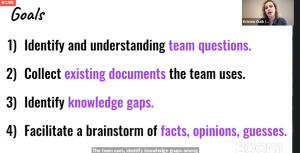
-
Identify and understand team questions
-
Collect existing documents the team uses
-
Identify knowledge gaps
-
Facilitate a brainstorming of facts, opinions, and guesses
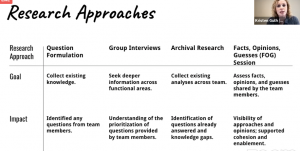
-
Group Interviews and qualitative thematic analysis for categories of questions areas, and existing reports
-
A FOG session to capture facts options and guesses
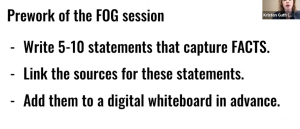
— Prework involves collecting 5-10 statement that capture facts and link the sources for these statements to a dashboard and product document and add them to a digital whiteboard
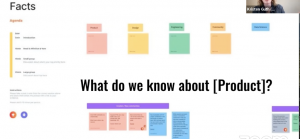
— We then ask people what we know for sure about a product
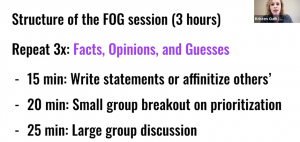
-
Opinions what people believe, but have little evidentiary support
-
Guesses are forward looking and think of where to go next
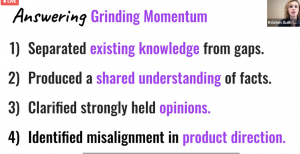
-
We also have a shared understanding
-
Started conversation and lead team to new product progress
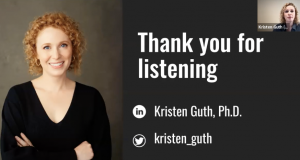
-
How to help team distinguish between the components of FOG, and can you give an example?
-
Goal of sessions is to have prioritization sessions to prioritize what are top facts across the board, and same thing with opinions and guesses and to take a board full of statements that look equal and what are most important opinions and guesses
-
More evidence on safety considerations and how to build something or construct it, but no info on audience specifically or how the audience might use the product
-
Goal to lay aside what was an assumption, even though it was strongly repeated as a fact
-
What if a FOG session establishes statements that makes stakeholder uncomfortable? How to manage tensions?
-
In aggregate report, don’t include names
-
For misalignment, the opinions are not softly held, and there needs to be a discussion on them
-
Still need balance of quiet times and presentation components to give people comfortable avenue to express themselves
-
Document based approach to reduce research amnesia. What are some of your other preferred knowledge management approaches?
-
Orgs are transactional and why they make the decisions they do
-
Orgs learn from each other and industry
-
Think of Arab Spring mobilizing individual people and affordances that resulted from it
-
When is the right time to apply the FOG method? What to do about data?
-
Turning point to do this is when something is contentious. Or when you notice product direction is way off from market signals
-
If PMs are not on-board to slow down to speed up, all you can do is best you can to advocate for user, and acknowledge this
-
-
Bad data is when people prioritize and crowd-source data
-
Example of team constantly congregating around a bad artifact for moving ahead with a decision
-
Raise a analysis of artifact for justification of moving forward
-
-
What if people claim something is a fact without hard evidence beyond hearing it as an anecdote from clients?
-
If an assumption explicitly articulates the artifact as a gap to tackle, question the underlying research to support the perspective of the artifact

